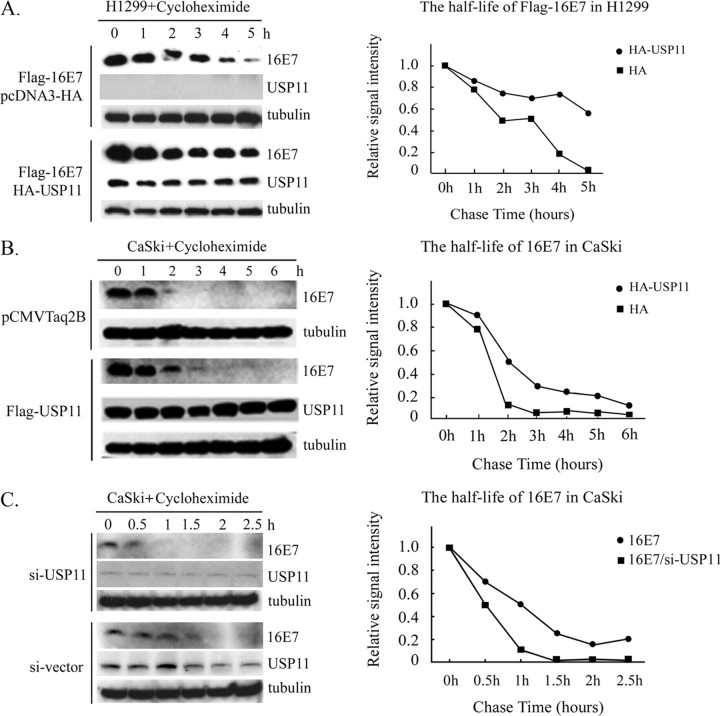FIGURE 4.
USP11 extends the half-life of both FLAG-16E7 and endogenous HPV-16E7. A, USP11 significantly extends the half-life of HPV-16E7 after cycloheximide treatment. FLAG-16E7 was introduced into H1299 together with pcDNA3-HA empty vector or pcDNA3-HA-USP11. At 48 h after transfection, the cells were treated with 50 g/ml cycloheximide to inhibit protein synthesis. Total cell extracts were collected at each indicated time point and were assayed either with α-FLAG to detect the remaining FLAG-16E7 or with α-HA to indicate HA-USP11 expression. Western blot analysis using α-tubulin showed that an equal amount of protein was loaded onto each lane. B, the same procedure also allowed us to study the ability of USP11 to stabilize endogenous E7 in CaSki cells. The amount of proteins loaded is indicated by the tubulin signals. C, USP11 significantly extends the half-life of endogenous HPV-16E7 after si-USP11 treatment. CaSki (si-) and CaSki (si-USP11) cells were cultured in medium containing 200 μg/ml G418. To assay the endogenous HPV-16E7 protein level, cell extracts were collected at the indicated time points after 50 μg/ml cycloheximide was added. The remaining HPV-16E7 was detected by α-16E7, and α-USP11 was used to detect endogenous USP11 expression.

